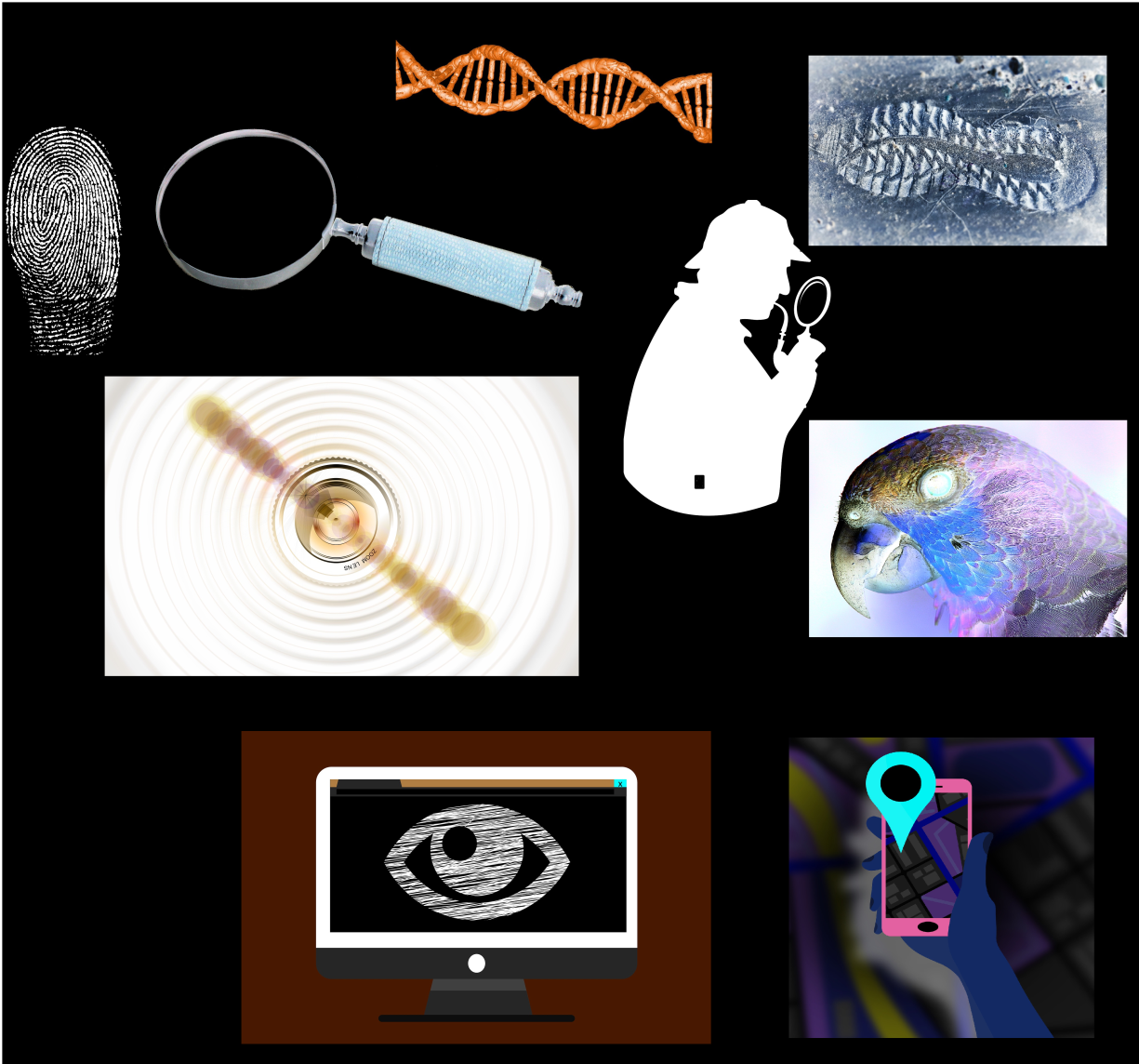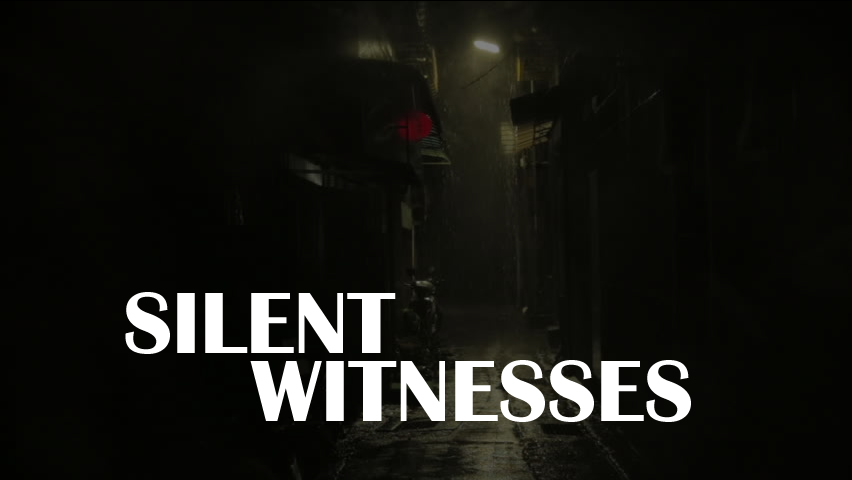4.03 AM – Security Cameras. Check. Emergency Alarms. Check. Safe. Check. The masked robber mentally went through the different tasks at hand. Almost there, he thought while carefully stuffing his loot into the huge bag he had brought along. The months of planning that predated this day had meticulously prepared him for these couple of hours. Everything had been thorough. He had anticipated every possibility. The mask, which was now covering his nervous exhalations, had made his face virtually unrecognizable. They say that no two people, from over the 100 billion humans that ever lived, had the same fingerprints. Well, thanks to the thick and expensive gloves he was wearing, he doesn’t have to worry about dactylography, the nifty name scientists call the field of fingerprint identification. He was also dressed entirely in black, so he could camouflage in the darkness, making it difficult to differentiate where he ended and the night began. He had even bought a pair of shoes that didn’t fit him very well as a red herring, to throw the cops off the trail. That particular branch, dealing with foot-related evidence in a crime scene, was called forensic podiatry, and he knew that the fancier the name (and there were many such fields within forensic science), the more comprehensive the field was.
He closed the bag, now full and heavy with his spoils. Things had gone mostly to plan. Time to lie low for a few months, and hopefully he had done enough to lead the cops on a wild goose chase. Didn’t they say that ‘if a tree fell in a forest and no one was around to hear it, it did not make a sound’? Or something along those lines? He had just cut down a forest and there was nobody but him to listen to it. And all he could hear was silence. Total, complete silence…
8.55 AM – The sirens of the car wailed, scathing through the cool, serene morning. The detective was already halfway to the location of the call. Robberies were fairly common and it wasn’t the first time she was called on such a case. In fact, some of her colleagues even preferred robberies over homicide. There certainly was much less blood, and cleaning up involved. Well, the reason why they were called in on robberies was because someone ‘cleaned up’ to begin with. Most of the robberies, particularly in banks, also involved a dilution of the suffering, due to multiple parties (board of directors, stockholders, clients etc.) being affected by the loss of money.
It made no difference, however. Robberies, murders, kidnappings, vehicle accidents, it was all the same for her. She had long learnt to suppress her ‘human’ emotions in such cases, and tried to put herself in the head of the perpetrator, instead of the victim. Not a stranger to Bloodstain Pattern Analysis (BPA), a pool of blood would trigger questions in her about the nature and timing of the wound, instead of empathy for the victim. She wouldn’t need that technique this day, however. Nor would she use her skill in Skid mark analysis (which looked at braking patterns used in vehicle accidents) for this particular case. No, this was a robbery. She had already told the workers in the premise to seal the area and not to disturb anything. The CCTV footage, if any, should be studied. The entire area should be scanned for fingerprints. If the robber(s) was/were wearing gloves, then there were Glove print analysis techniques that came into the picture. Her mind was going over different possibilities like a computer running various algorithms.
Much of what occurred at crime scene investigations relied on Locard’s Exchange Principle, developed by French criminologist Dr Edmond Locard, considered a pioneer in Forensic Science. The principle can be summarized as the following: “Every contact leaves a trace”. In other words, every time you made a contact with something, it resulted in an exchange of physical materials. Both the materials that a perpetrator brought to the crime scene (DNA, fingerprints, footprints, skin cells, hair, blood, bodily fluids, pieces of clothing, fibers and more), and the materials that they took away from the scene, could be used as evidence. No matter how scrupulous this robber was, there would always be something that led them to the truth. She just had to look for them.
As if physical evidence was not enough, there was always the possibility of witnesses. The term itself may be slightly misleading as even blind or deaf people could ‘witness’ a crime. They just had to be present on the scene and noticed something. Things could get a lot more blurry of course. Sometimes, even animals served as ‘witnesses’ for crimes. However, since they did not take the oath ‘to speak nothing but the truth’, they were treated as evidence instead of witness testimonies in most cases. There had been cases where a dog barking or a parrot chirping turned the tides of cases. She had even heard of one such case, where a parrot had provided a crucial part of the puzzle. Although the police suspected that home intruders had shot Mr Martin Durham (46) in Michigan in 2016, it was noticed that his parrot Bud was repeating the same conversation over and over again. The parrot’s talk played out like a tape-recorder, mimicking the voices of both Martin and his wife Glenna, during what sounded like the last fight they ever had. As Bud chillingly narrated Martin’s last words (“Don’t f****** shoot!”), the cops turned their suspicion towards the wife, which ultimately led to her conviction.
The case was indeed fascinating. However, there was still a debate whether parrots were using language, or just mimicking what they heard (similar to human babies). Regardless, she was sure that there were other pieces of evidence as well that led to the guilty verdict in the case.
“We are 5 minutes away”, her colleague spoke to the radio. “Alright, copy that”, the reply came almost instantaneously. Technology certainly was wonderful, she thought. It reminded her of another case where technology had played witness to a crime. When Christine Sullivan and Jenna Pellegrini were stabbed to death in 2017, the police realized that Alexa, Amazon’s voice assistant, could have heard the whole thing from the kitchen counter. Although Amazon did not hand over the recordings from their servers stating the confidentiality of their client, it certainly was a promising path to follow. After all, voice assistants such as Alexa (or Siri, Cortana or Google Assistant) could be recording any time, even though they were programmed to only respond to specific keywords. The Sullivan case was only one such case where the spotlight was on technology. There was another one where data from a victim’s Fitbit, a digital pedometer, had led to the arrest of her husband after his story did not corroborate with the steps recorded on his wife’s device. Many other devices that were indispensable to people had already assisted the police in catching culprits. GPSes, Google Dashboards, cell phones, what couldn’t track you down these days ? George Orwell may not be too happy with the situation but as a detective, she certainly was not complaining.
 With so many options under an investigator’s disposal, it was almost impossible to avoid these silent ‘witnesses’ that observed every action that happened, only to then scream it out to the world. A true vacuum, devoid of ‘watching eyes’, did not exist. In most forensic fields, the ceiling of possibilities was reached not by the absence of the evidence, but by human limitations and the lack of technology available to analyze them. Considering that such limitations indeed existed, some of the media portrayals of crime scene investigations tended to be unrealistic and exaggerated. This may even have influenced public perception and affected some trials due to the jurors’ TV show-inspired notions of the legal procedure. For instance, the jurors’ demand for more forensic evidence in criminal trials, and their overstating of the “presumption of innocence” of the defendant have been termed as the CSI effect and the Perry Mason syndrome respectively, both named after TV procedural dramas. Regardless, with science & technology growing at an exponential pace, the possibility of further improvements in the field was certainly exciting and boded well for the future of forensic investigations. However, the awaiting brighter future did not in any way imply that the present was bleak. Biometrics, including facial recognition & iris scanning, fractography, trace evidence, DNA evidence; the tools available in the current forensic repertoire were endless. Combined with testimonies from witnesses and other pieces of evidence, it should be more than enough for most cases.
With so many options under an investigator’s disposal, it was almost impossible to avoid these silent ‘witnesses’ that observed every action that happened, only to then scream it out to the world. A true vacuum, devoid of ‘watching eyes’, did not exist. In most forensic fields, the ceiling of possibilities was reached not by the absence of the evidence, but by human limitations and the lack of technology available to analyze them. Considering that such limitations indeed existed, some of the media portrayals of crime scene investigations tended to be unrealistic and exaggerated. This may even have influenced public perception and affected some trials due to the jurors’ TV show-inspired notions of the legal procedure. For instance, the jurors’ demand for more forensic evidence in criminal trials, and their overstating of the “presumption of innocence” of the defendant have been termed as the CSI effect and the Perry Mason syndrome respectively, both named after TV procedural dramas. Regardless, with science & technology growing at an exponential pace, the possibility of further improvements in the field was certainly exciting and boded well for the future of forensic investigations. However, the awaiting brighter future did not in any way imply that the present was bleak. Biometrics, including facial recognition & iris scanning, fractography, trace evidence, DNA evidence; the tools available in the current forensic repertoire were endless. Combined with testimonies from witnesses and other pieces of evidence, it should be more than enough for most cases.
Technology, and this vast scope of knowledge, however, was available to everyone. Both the perpetrators and the police could thus use it against the other. In Lewis Carroll’s ‘Through the Looking-Glass’, the Red Queen tells Alice that she had to keep running just to keep her same position, as the world kept shifting quickly under her feet. This ‘Red Queen Effect’ was true for forensics as well; the investigators had to constantly play the game of one-upmanship with the criminals to stay one step ahead. It was part of the job.
9.10 AM – She was finally at the location. Turning the sirens off, she stepped out of the car with her colleague. This case would be solved as well. The only question was when.

